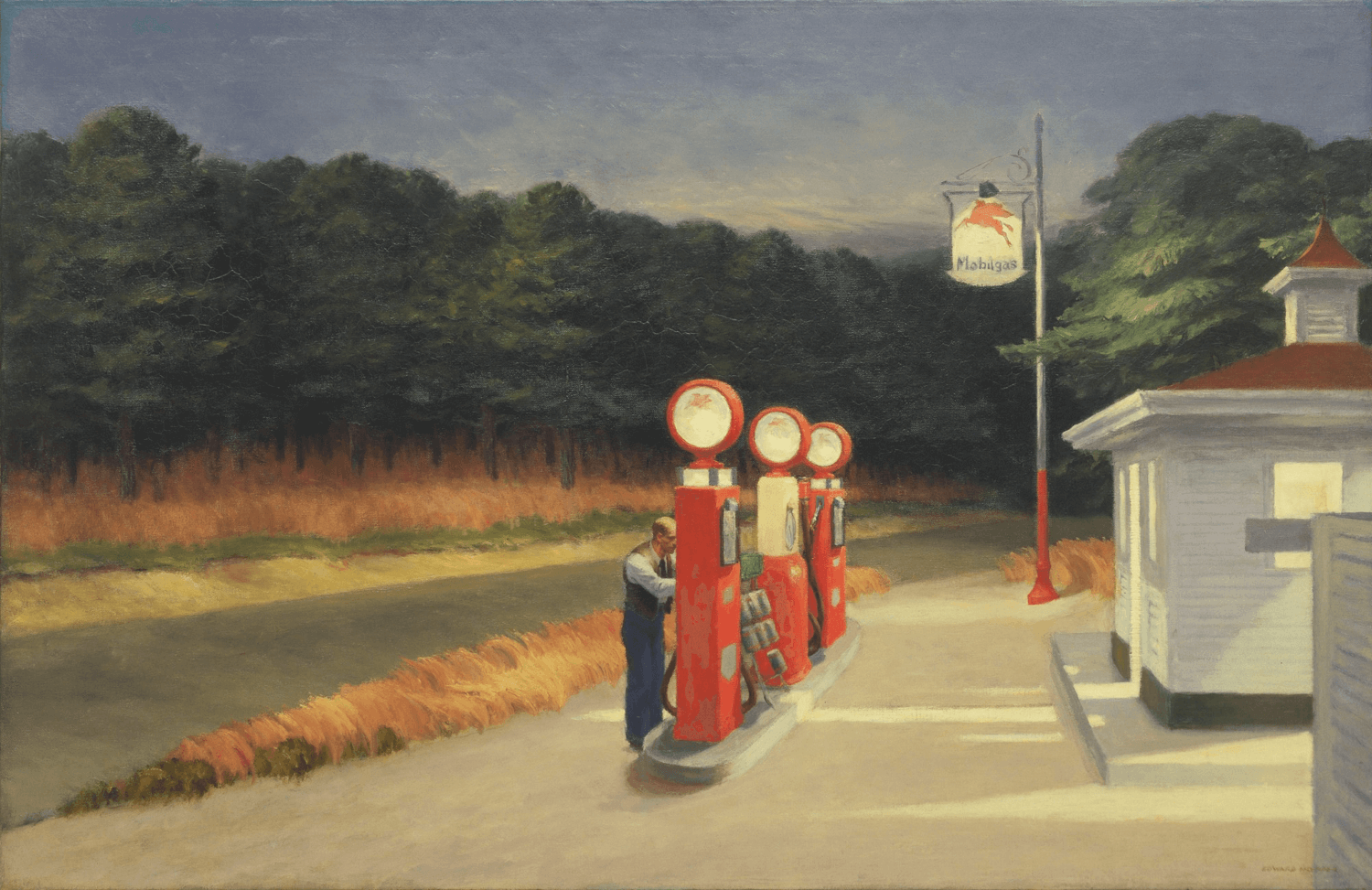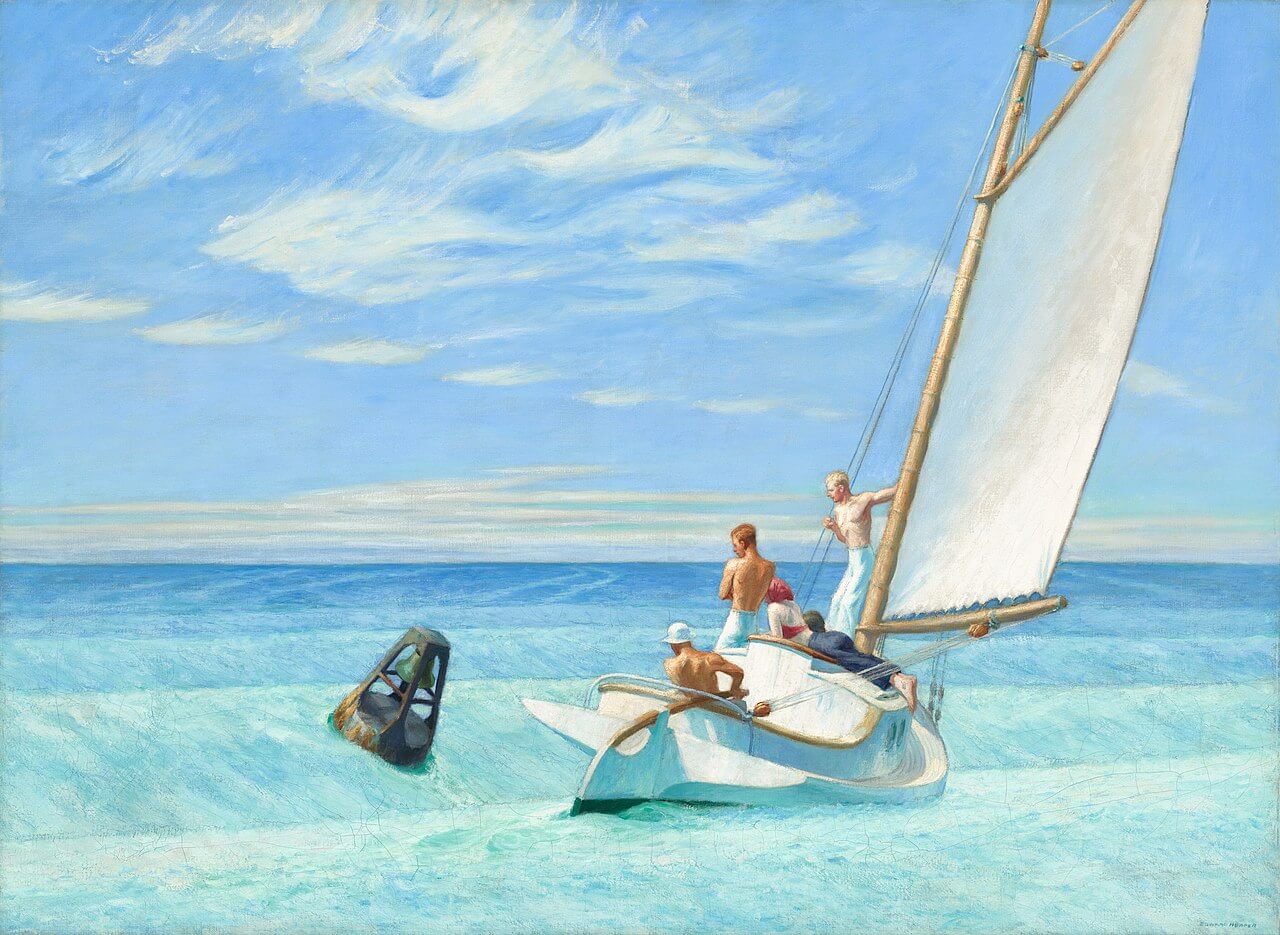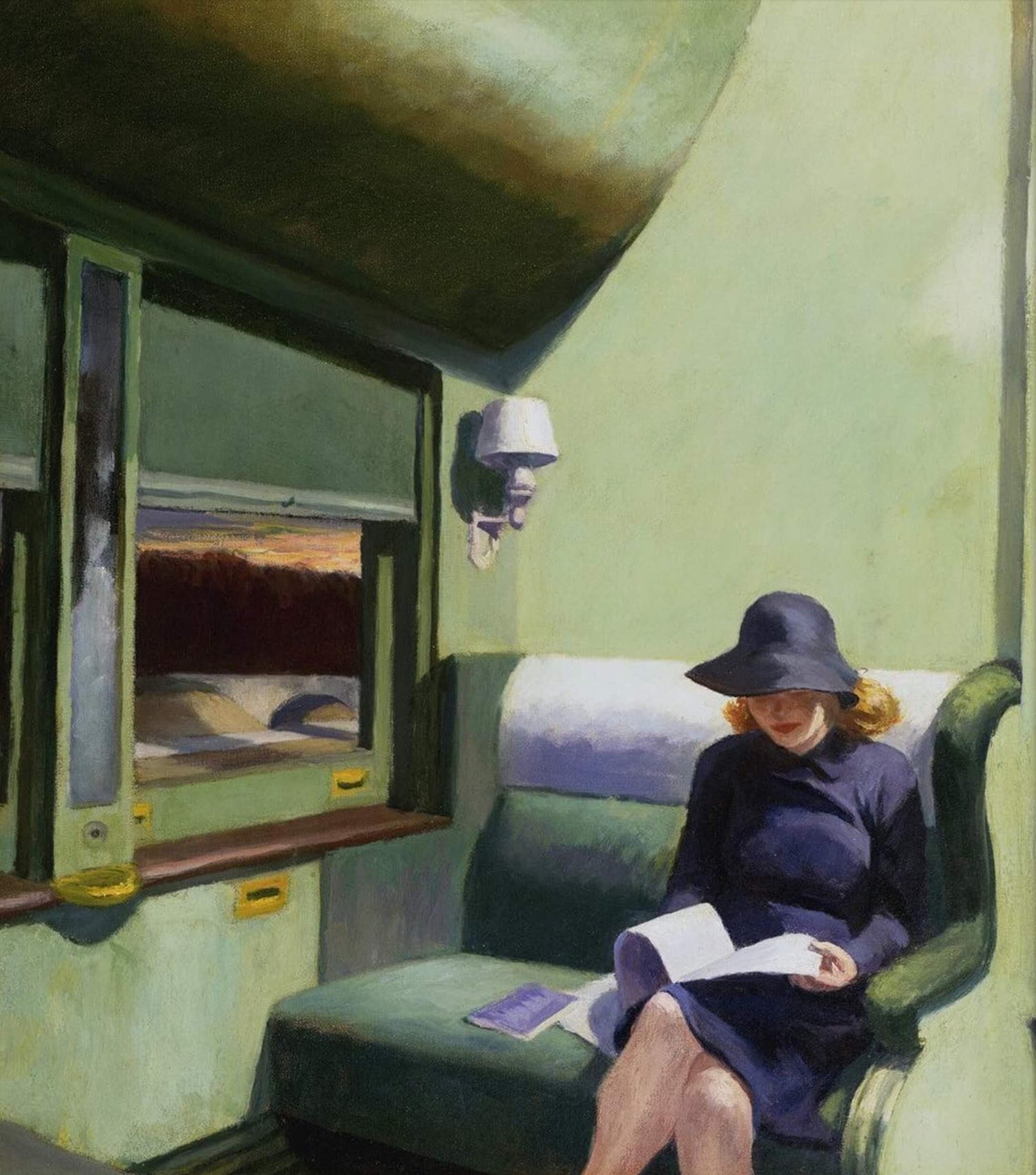Edward Hopper is an iconic figure in the world of modern art, known for his striking depictions of solitude and American urban life. Born in 1882, his artistic journey began in the classrooms of New York, where he developed a distinct and powerful style, deeply rooted in realism. Influenced by masters such as Édouard Manet, Hopper succeeded in creating a unique visual language, capturing the essence of everyday life with deceptive simplicity and emotional intensity.
Hopper's works are characterised by a bold use of light and shadow, creating scenes that seem both familiar and strangely isolated. Through his paintings, he explores themes of solitude, reflection and melancholy, painting moments of urban life that stand the test of time. In this article, we delve into eight of his most iconic works, revealing how each contributes to our understanding of his artistic legacy and his vision of the modern world. These paintings are not just depictions of scenes and figures; they are windows into the human soul, offering an intimate insight into the human condition through the eyes of a master of modern art.
Hopper's artistic beginnings
Edward Hopper's first steps in the art world were marked by a rich and varied education, laying the foundations for his unique style. Born in 1882 in Nyack, New York, he quickly turned to art, studying at the New York School of Art under the tutelage of William Merritt Chase. Influenced by figures such as Edgar Degas, Hopper began to forge his own artistic identity, combining realism with a distinctive personal touch. These formative years were crucial in developing his approach to light and colour, elements that would later become the pillars of his iconic work.
Hopper's unique style
Edward Hopper's style is characterised by a captivating simplicity, in which light plays a central role, creating melancholic and introspective moods. His paintings, often imbued with solitude, illustrate scenes of everyday life with poignant emotional precision. Hopper mastered the art of visual storytelling, where every element, from the rigorous composition to the reduced colour palette, contributes to an atmosphere of reverie and contemplation. His works reflect a deep understanding of the human psyche, capturing moments of solitude in urban and rural landscapes. This style, at once realistic and symbolic, makes Hopper an essential painter of modern American art.
1. Nighthawks
Nighthawks, painted in 1942, is one of Edward Hopper's most emblematic works. The painting depicts a night scene in an American diner, where three customers and a waiter are immersed in intense artificial light, contrasting with the darkness of the sleeping city. The absence of visible doors on the diner underlines a feeling of isolation and separation from the outside world. Hopper masterfully captures urban solitude, a recurring theme in his work. The composition, with its clean lines and dramatic lighting, creates an atmosphere of mystery and contemplation, reflecting the complexity of human emotions in the face of modernity.

2. Gas

Gas, painted by Edward Hopper in 1940, depicts a twilight scene in an isolated service station. This work captures the essence of solitude in rural America, in stark contrast to his urban works. The soft lighting of the petrol station emerges from the surrounding darkness, symbolising a haven of light in an otherwise dark and unpopulated world. Here, Hopper uses his mastery of light to create an atmosphere that is both peaceful and melancholy, capturing a moment of solitary tranquillity. Gas embodies Hopper's ability to depict genre scenes with emotional depth, reflecting the nostalgia and isolation characteristic of the modern human experience.
3. Rooms by the Sea

Rooms by the Sea, painted in 1951, is another major work by Edward Hopper that captures the essence of solitude and contemplation. This realistic painting presents an interior view of a bedroom opening directly onto the sea, with bright light flooding the room. The open door to the ocean creates a striking contrast between the intimate space and the vast unknown, perhaps symbolising escape or isolation. There are no visible figures, reinforcing the sense of solitude. Hopper's mastery of light and shadow, and his ability to evoke emotions through simple scenes, are fully evident in this work, offering a quiet meditation on isolation and quiet beauty.
4. The Long Leg

In The Long Leg, Edward Hopper captures the essence of the sea with striking simplicity and clarity. This 1935 work depicts a sailboat sailing along the coast, with a lighthouse and houses in the background jutting out into the desert landscape. The white sail of the boat stands out against the intense blue of the ocean, while the almost meditative tranquillity of the sky dominates the composition. Hopper plays with perspective and light to guide the eye towards the horizon, evoking a sense of freedom and infinity. As is often the case in his work, there is an impression of solitude, but also of independence and peace, recurring themes that run through Hopper's work. The Long Leg is a window into Hopper's world, where the sea is both a space for reflection and adventure, reflecting the duality of the human experience in the face of nature.
5. Ground Swell

Ground Swell is a 1939 painting in which Edward Hopper illustrates the encounter between man and the immensity of the sea. The painting shows a group of sailors on a sailing boat, sailing on a sea churned by the wind. The composition is marked by a light blue sky that contrasts with the darker tones of the water, capturing the precise moment when the figures seem both in harmony with their environment and respectful of its power. The sense of movement is palpable, thanks to the realistic representation of the waves and swell. As so often in Hopper's work, the human presence is in evidence, but the figures are deep in thought, perhaps contemplating or anticipating what their journey will bring. This work reflects Hopper's fascination with the sea, a theme that provides a rich playground for his exploration of solitude and human interaction with nature.
6. Compartment C, Car 293

In Compartment C, Car 293, Edward Hopper plunges us into the intimacy of a train compartment, where a woman sits engrossed in reading. Painted in 1938, this work depicts solitude in the midst of movement and travel. The light filtering through the window illuminates the scene in a soft, reflective way, emphasising the contrast between the inside and outside of the carriage. The green and yellow tones of the compartment frame the figure of the woman, whose hat and posture evoke an elegance tinged with melancholy. As is often the case with Hopper, the subject is absorbed in her activity, isolated from the outside world and the viewer, creating a moment suspended in time. This painting is an example of Hopper's ability to capture human solitude in modern spaces, highlighting the emotional distance that can exist even in places of passage and transit.
Concluding remarks
Edward Hopper's work invites us on an introspective journey through scenes of everyday life, imbued with solitude and reflection. From Nighthawks to Compartment C, Car 293, each painting is a window onto the human soul, a study in light and colour, and a silent recounting of unspoken emotions and stories. Hopper's characters, often isolated but profoundly human, confront us with our own introspection and perception of the world around us. His unique approach to art never ceases to captivate and resonate with observers, making his works timeless classics of modern American art. By poetically depicting American reality, Hopper not only left his mark on his era but continues to influence contemporary art, demonstrating that the true essence of art lies in its ability to transcend time and reach out to the universal.



